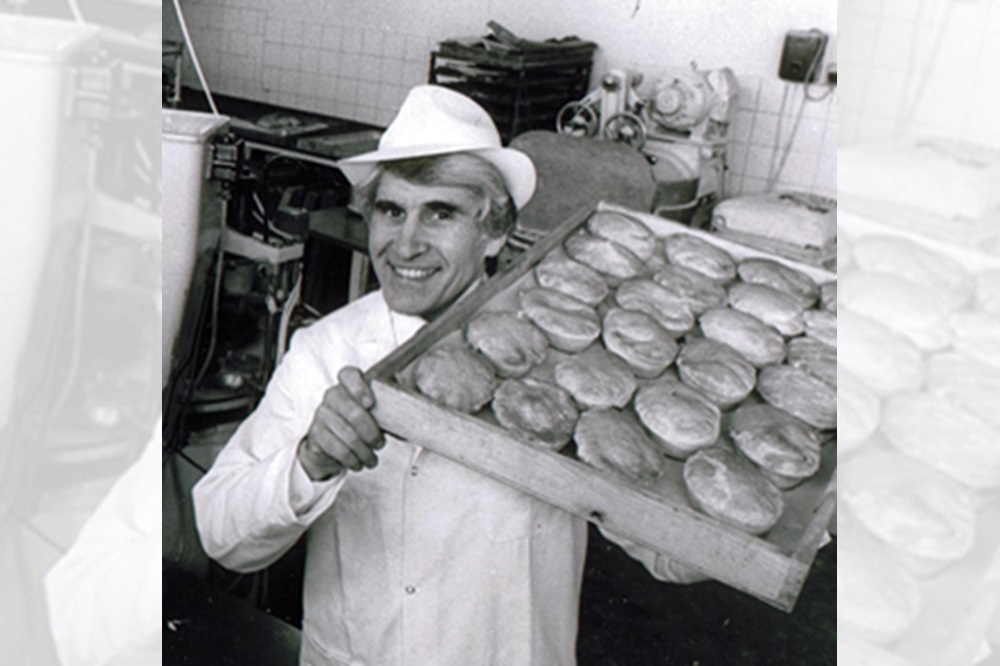Welsh Food Stories: On the trail of the Welsh pie

Carwyn Graves
How can you get a good hot lunch, affordably and on the go in the middle of a heavy working day? The answer for so many in Wales today, just as in centuries gone by, is with a hot pie from a local bakery or chippie.
Through the long months of cold and wet, there is possibly no food as comforting as a good, homely pie; and though they may not have the exotic appeal of an enchilada or a Thai curry, pies of all shapes and sizes have been a cornerstone of our own street food culture since time immemorial.
Unsung, they are silent heroes of our food, creating their own local traditions, making use of meat offcuts and so much more versatile historically than most of us give them credit for.
Varied roots
We can enter the world of Welsh pies past through the recipe collections of Merryell Williams, farmer’s wife from rural mid-Wales who died in 1702.
Among her recipes for pickling veg and drying fruit are numerous instructions on how to make a range of pies to feed hungry farm-hands, including beef pie, venison pie and even a pork rib pie.
She was writing within a culture that was long since accustomed to making pies (well-seasoned, with judicious use of herbs) from whatever core ingredients were available – whether meat- seafood- or veg-based. As the 15th century poet, Lewys Glyn Cothi put it in anticipation of a feast:
Pysgod, adar mewn bara /
Pasteiod, hen ddiod da
(Fish, birds in bread/
Pasties, good old ale)
His contemporary, Dafydd ap Edmwnd, agrees that pies in Wales at the time were made with a range of ingredients, as his reference to a ‘black pea pie’ being an Anglesey speciality imply.
More specific recipes from later periods bear this impression out, like the 1700s collection from Aberystwyth that includes one for oyster pie – a common foodstuff among the working classes during this period.
And as we enter more recent periods, the range of attested Welsh pies grows to include cockle pie, Gower bacon pie (also called ‘dowset’), parsley pie (yes, a historic veggie pie) and Glamorgan pie (featuring bacon, eggs and chives), amongst others.
Local institutions
Out of this range of local pie flavours and recipes, a handful became institutionalized as local favourites. Evans’ pies of Port Talbot (est 1926), Lewis’s pies of Swansea (1936) and the now ubiquitous Peter’s of Bedwas (est. 1970 from an older Merthyr bakery family) are just three of the southern Welsh regional pie empires.
But at the risk of attracting local ire, possibly the most iconic of these is Clark’s pies of Cardiff, now entering its 111thyear.
Sold from a semi-unchanged pie shop in Grangetown and available widely across the city, these classic minced beef, potato and gravy pies have become inseparable from the city’s street culture.
Associated with the stands at Cardiff City matches, and still run as a family business, there’s an urban fairytale quality to these pies, which have even generated their own lingo:
- Clarksies – colloquial nickname given to Clark’s Pies.
- A Clark’s Tash – The nickname given to burning the upper lip with the hot filling.
- The Hanging Gardens of Grangetown – The nickname given to burning the lower lip with the hot filling.
It often is the foods linked to social occasions that become iconic within cultures (think Jewish Challah, Russian caviar or Sunday roast); it’s no surprise then that pies have historically won themselves a prized place in urban Welsh society.
Filling future
But with food security concerns mounting against the backdrop of a destabilizing global climate system, a survey of media reporting on food could easily give the impression that pies and similar foods will have no place in the new food regime of clean eating and ’meat-free’.
The reality though is sure be more complex. The ingredients needed to make a wide range of warming, filling pies are all easily available locally, and the scope for fillings spans the gamut from root veg and pulses to offal, beef and yes, meat substitute.
What’s more, the economics of pies, now as then, can add up to keep them affordable in a way that simply doesn’t work for more high-end street food.
Long live, then, the humble Welsh pie – in all its variations!
This is part of a monthly series on Nation.Cymru on the diversity of Welsh food culture by Carwyn Graves. You can read the other installments of the series here.
Support our Nation today
For the price of a cup of coffee a month you can help us create an independent, not-for-profit, national news service for the people of Wales, by the people of Wales.






